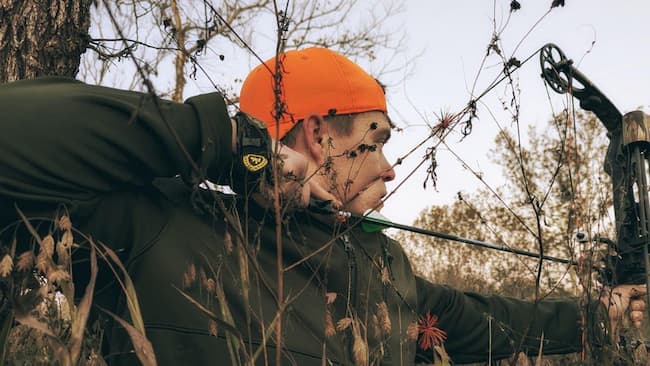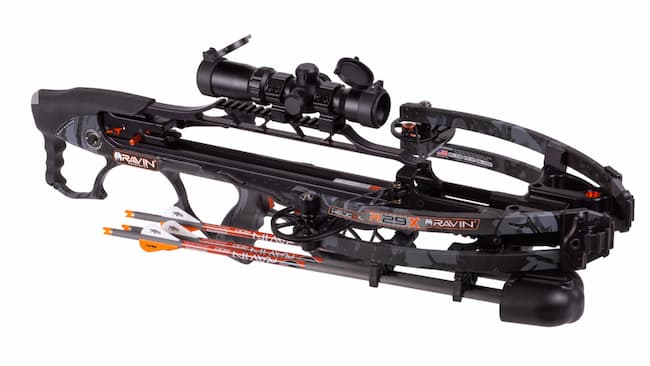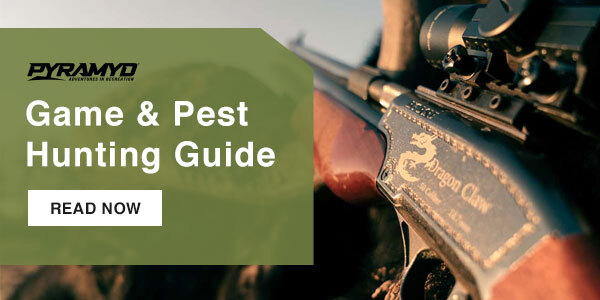
One of the biggest challenges to bow hunting if you’re using a traditional or compound bow is when to draw? If you draw too early you may be stuck holding your position far too long and unable to follow through with the proper form. If you draw too late, the game you’re hoping to harvest may be spooked by your movement. How do you know when the time is right? We’re not talking about a marriage proposal, but it is just as serious.
Why Do You Prefer A Crossbow
There are advantages to using a crossbow and that is one advantage that some archers are easily provoked to pack their Ravin RX29 Crossbow into the Ravin Crossbow Case and hit the woods, your backyard or your buddy’s stand. You’d better get permission first because that’s the right thing to do!
With the Ravin RX29 Crossbow cocked and the Ravin .003 Bolts nocked; you settle into your cozy little hunting spot. The tip of the G5 Deadbeat V2 3 Blade broadhead staring in the direction you hope the game makes its entrance. In this situation, little to no movement is required. Picture perfect, here comes a sounder of hogs in the exact direction you’d hoped. All you have to do is make a slight adjustment for you perfect point of impact, quietly disengage the safety and squeeze that single stage trigger.

Pretty simple success, and these are good reasons why some archers prefer a crossbow.
- Minimal movement required to sling an arrow.
- Higher velocity and FPE.
- Requires less strength to operate.
Traditional Archery
So back to my original question, “How do you know when to draw?” Please feel free to add your two cents. If you’re shooting traditional archery (longbow or recurve) and you draw too early, you’d better eat your Wheaties. There’s no break, literally, with traditional archery.
If the bow you have in your hand is the Diamond Edge XT Compound Bow the draw won’t be as cumbersome as a traditional bow, because it does quite literally have a break. Is The Bow Bully telling you it doesn’t matter if you draw too early with a compound bow? Absolutely not!
Holding the Draw Position
Here’s an exercise for you; stand up, go ahead get in the draw position and hold…keep holding. At some point, I don’t care who you are, you will begin to weaken and shake. What do you think will happen when shaky you takes that shot when the game finally gets within range? One little shake in either direction can throw the point of impact off by inches. It’s important to get the timing right.
This is where it comes down to the shooter, that’s you, paying attention to the game. The wrong time to draw is when they’re walking in with their head in your direction, the slightest movement could give you away. No matter the distance you’ll want to make your move when the animal is not looking your direction.
Hunting is Unpredictable
Every hunt is different, sometimes you may get your draw on at thirty yards while the animal has their head down enjoying a meal. Other times it may be a fifteen-yard draw of desperation because little did you know, you were hidden so well with the Allen Vanish Camp Face mask ( and I hope you’re wearing more than just a face mask).
Hunting is unpredictable, the best way to know when to draw is different every time. It is crucial to know you’ll have to customize your draw time to the situation, if you will, you’ll be a skilled bow hunter every time, even when you make mistakes because that’s hunting.
Are you still holding the draw position? That’s pretty good, you can relax, I’m done. Happy hunting!

TBB,
With Whitetails, if you can see even a small portion of the deer’s eye it will definitely pickup any movement you make in it’s peripheral vision.
Being nervous creatures (with good reason) a deer’s attention will flit from one possible threat to another and you will often get a chance for a quick shot when it’s looking away from you. One trick I’ve used with good success is to hang a small cloth at eye height, 10 yards off the far side of the trail to distract the deer from my position.
With wood bows (and slingshots) it’s not good to hold at full draw for any length of time (the bow starts to take a bend/set or the bands start to loose some of their elasticity and loose efficiency when at maximum stress – look up “Hysteresis Loss in wood bows”).
I shoot fast, releasing the moment that the draw comes to anchor. I do this by “aiming” before I raise the bow or start to draw. I focus on where the arrow has to go and the moment the opportunity arises it’s push/pull/anchor/release and the arrow is gone in half to three quarters of a second.
Small game and large game rarely gives you more than a second of hesitation before they bolt. You have to anticipate a pause in their movement or a momentary distraction and have the arrow in flight in a fraction of a second.
Cheers!
Hank
TBB,
“How Do You Know?”
By knowing IT.
You feel IT!
In any short range hunt with whatever your implement.
You pay for IT with time in the field practicing without ever taking a shot at first. Only once you have some EXPERIENCE in knowing when IT is right do you bother with a projectile of any sort. Even then IT will elude you. So what if your prey jumps; are you subsistence hunting?
It is a shame that so many folks don’t bother to learn the art of the hunt any longer; all you see is LISTS of gear to overcome the lack of the “harvesters” EXPERIENCE.
When you read Vana2’s reply you an feel IT…
EXPERIENCE.
shootski
Well said, shootski and Hank.
Thanks for the tips and pointers. After reading the true experts comments on these blogs, we really have no excuses…well except for the fact that we are all people, mistakes are made and hopefully learned from as it’s obvious all of you have, and are here to share with us what you’ve learned.
For that I, The Bow Bully, thanks you!
-TBB
TBB,
I’m very careful around the word “expert”. To me it implies “all knowledgeable” and I know there’s always more to learn.
Knowledgeable people are those who are keenly aware, question and analyze everything while keeping an open mind to different perspectives. Old people are wise/knowledgeable because they have been around long enough to have seen a great many things and learned what works and doesn’t 😉
Know that your blog is mostly to educate and expose people to products that may interest/benefit them but, from a hunting perspective, I put “equipment” low down on the list of what’s important.
IMHO…
– You have to know your quarry. (I understand the deer’s language, speak some it as well)
– You need to know the hunting grounds (feeding/bedding areas, safe zones, travel routes)
– You need to understand how weather and other people will affect your quarry.
– You need to have appropriate equipment.
– You need to know how to tune all the various pieces (broadhead/shaft/nock; arrow/rest/bow) to work together properly.
– AND, importantly! You need to know your limitations and skills.
Lots of things to write about TBB!
Cheers!
Hank